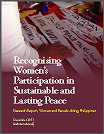- Details
Module 4: Transformative Potential of Community Radio
Session 1: Radio Studio Operation 101 (Enhancing Media Skills)
Duration: Two hours
Introduction:
In Community Radio many of the broadcasters are volunteers, so knowing how to operate radio studio enables them to do their programs independently. However women seldom have access to studio operation and depend on male technicians. Training women in studio operation is part of the empowering potential of Community Radio. The workshop seeks to equip the participants with the effective use of this technology. Radio Studio Operation 101 is the first of four sessions that aims to strengthen the participants’ skills in radio production. This two hour session will share the basics of radio studio operation by familiarising participants with a make shift radio studio, at the end of the session the participants would have been able to:
- Operate basic radio equipment
- Identify the path of sound that help solve technical problems
- Mix and record their own productions
- Know how the different devices of a studio are connected
Read more: Radio Studio Operation 101 (Enhancing Media Skills)
- Details
A Workshop on Engendered Peace Journalism
Duration: one hour and thirty minutes
Introduction:
This one hour and a half session on the Transformative Potential of Community Radio aims to promote community radio as an effective information tool and how it can help promote values for peace and gender
fairness. At the end of the session the participants would have been able to:
- Identify advantages and disadvantages of radio as a medium of mass communication
- Differentiate between public, commercial and community radio
- Identify the principles and characteristics of community radio
- Define the transformative potential of community radio
- Share experiences of being part of a community radio and its effective use as an information tool
- Identify possibilities of how community radio can be used as tool towards engendered peace journalism
Read more: Module 4: Transformative Potential of Community Radio
- Details
Principles of Gender Sensitive and Respectful Reporting
I. Who Controls the Media?
“Today, the majority of media companies worldwide are managed by men. While some women have advanced into media leadership, men make most of the decisions about what does and does not constitute as news. In addition, women are not moving into leadership positions in the media in numbers that reflect their numbers in society.”1
- Details
Module 2: Media on Portrayal of Women and Conflict Reporting
A Part of the Women Making Airwaves for Peace:
A Workshop on Engendered Peace Journalism
Duration: Four hours
Introduction:
Media mediates and shapes people’s reality. It is supposed to reflect the
economic, political, social and cultural situation whether we talk about local, national
or global issues. It plays a great part in shaping society’s perception on women. It
contributes to people's views of conflict and wars. This module seeks to do a critique
of media's portrayal of women, and conflict reportage. It also attempts to develop
alternatives and how to make a difference. At the end of the four hour session, the
participants would be able to:
- Identify positive and negative experiences of media coverage on issues important to them
- Examine media ownership as it affects media work culture and decision making towards newsworthiness
- Describe the impact of the missing women’s perspective, silencing women’s voices.
- Identify sensationalized war and conflict reportage and its impact on the audience.
- Define areas and spaces for intervention, and reflection points on how stories should reflect a holistic perspective
Read more: Module 2: Media on Portrayal of Women and Conflict Reporting
- Details
A Part of the Women Making Airwaves for Peace:
A Workshop on Engendered Peace Journalism
Duration: Two hours
Introduction:
Peace does not have a singular definition, because it does have many facets, and is given meaning through people’s experiences. Peace is often discussed within the context of war, yet it is more than that, as participants in the past three trainings have shared. As the first session of the Principles and Values of Engendered Peace Journalism made Popular through Community Radio, it seeks to define peace through participants’ experience; it seeks to strengthen the links of peace to other concepts that contribute to peace in people’s lives. At the end of the two hour session the participants should have been able to:
- Share their experiences and definitions of peace and conflict
- Identify the factors that influence the presence or absence of peace





 The
The 
 Isis Resource Center holds one of the largest feminist collections of materials in the Global South. With 40 years of publication experience, Isis holds a vast collection.
Isis Resource Center holds one of the largest feminist collections of materials in the Global South. With 40 years of publication experience, Isis holds a vast collection.